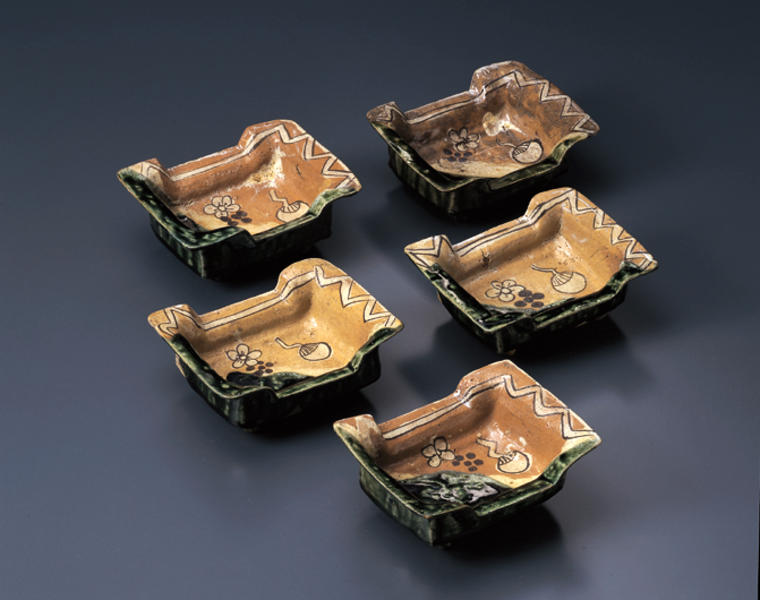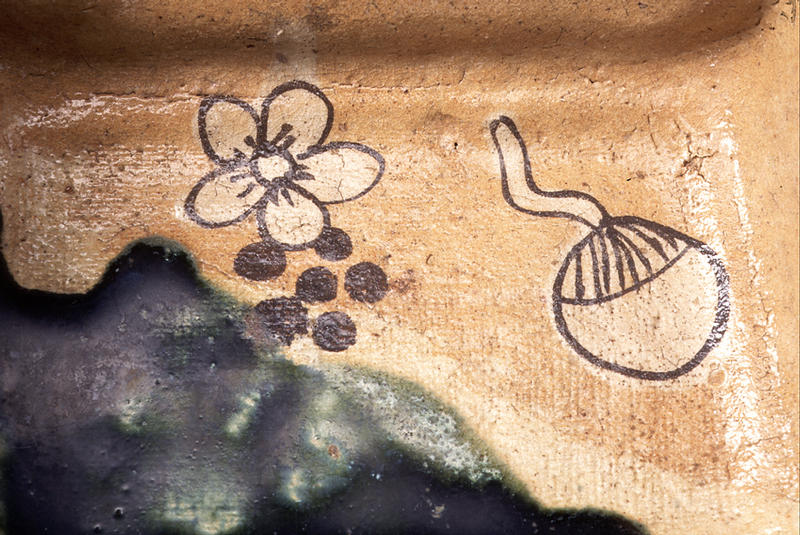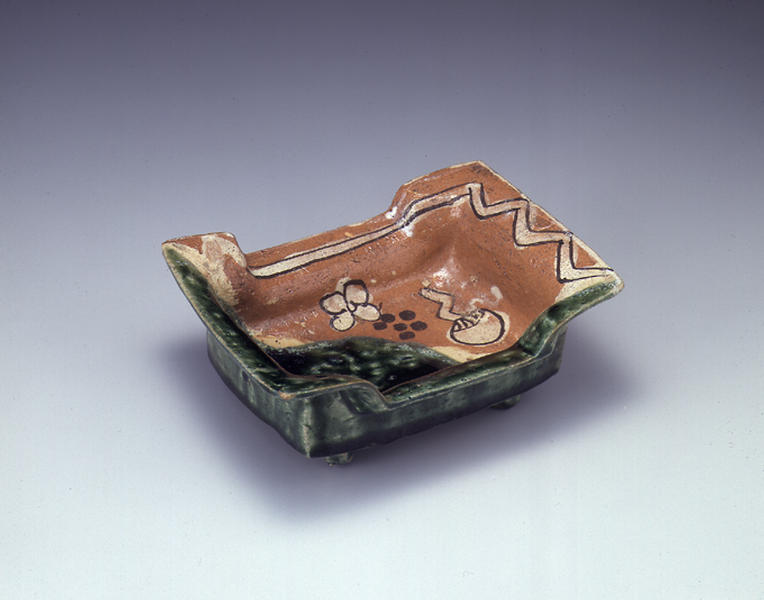織部切落向付
- 岐阜県・美濃窯
- 桃山~江戸時代
- 17世紀
- 美濃陶製
- H-5.5 D-15 W-11.7
鳴海織部(なるみおりべ)
織部の一種で、白土と赤土をコンビにして素地を作り白土の上には織部釉を、赤土の上には白泥と鉄で文様を描きます。
Catalogue Entry
Set of 5 dishes
Momoyama to Edo periods, 17th century
Oribe ware, Narumi-Oribe type
Height, 5.5cm; mouth diameter, 14.9-19.3cm
Rectangular in shape with a flange rim, these dishes are formed in the cutaway shape in which 2 sides are 1 level lower than the other 2. This form appears in both mukozuke dishes and in tebachi dish vessels and was particularly enjoyed by tea masters. The present mukozuke dishes were molded using half red clay and half white clay, with the white clay areas then covered with a green glaze and the red clay areas coated in a transparent glaze with underglaze motif decorations. This specific division of clay and glazing indicates that the potters were aware that the green glaze does not produce a pleasing color affect on top of the red clay.
In general, Oribe wares that are half red and half green are known as Narumi Oribe. The red clay in the present bowls is comparatively darker than that normally found, and this deep red clay in combination with the rich tone achieved in the firing of the green glaze creates an unusually vivid and colorful mukozuke dish form. The underglaze decoration is painted in iron under-glaze and white slip, and these motifs are an able example of the techniques used at the Mino Motoyashiki kiln. 4 of the distinctive Mino ware feet are attached to the four corners of the base of each dish, and a circular sagger mark remains in the center of each base. TA
解説(春の玉手箱)
鍔がついた長方の向付であるが,二辺を一段低くした形を切落形と言い,向付や手鉢などに見られる器形で,茶人の間でとくに好まれるものである。この向付は赤土と白土を片身替りに用いて型造りされたもので,白土の部分には緑釉が掛けられ,赤土の部分には透明の釉下に文様が描かれている。緑釉が赤土の上では発色が悪いことを知っての配慮である。
かつて赤と緑を片身替りに配した織部焼を俗に鳴海織部と呼んでいたが,ことにこの作品の場合は赤土が他のものに比べて濃く,また緑釉も濃く発色しているところから稀にみる色鮮やかな向付に焼き上がっている。片身替りは室町時代~江戸時代初期にかけて小袖に多く用いられた装飾だが、陶器や漆器の片身替りもその影響を受けたものである。文様は鉄釉と白泥で描かれており,美濃元屋敷窯の技法が駆使された作品である。底の四方に美濃物独特の足がつけられ,中央に円形の置跡が残っている。五客組のうちの一客。


